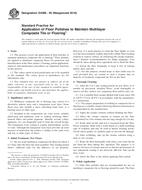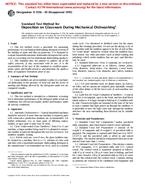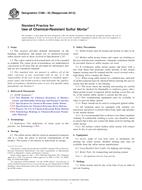1.1 This test method covers the testing of automatic valves for cycle life utilizing static, no-flow conditions. This no-flow condition is felt to be a realistic test to determine the valve’s cycle life.
1.2 This test method applies to automatically operated valves. It is intended to measure the cycle life of the valve itself including the seat and body sealing. It does not include cycle testing of the actuator. Testing must include both pressure testing and helium leak testing and must include vacuum test conditions when appropriate. This test method may be applied to a broad range of valve sizes.
1.3 Limitations:
1.3.1 This test is not designed to evaluate the performance of the actuator. This test method addresses the gas system contamination aspects of the valve performance, that is, seat and body leakage and diaphragm or bellows failure. If the actuator fails during the evaluation, the valve is deemed as a failure.
1.3.2 While the requirements of a valve’s performance might include items such as particulate generation levels, this test method only attempts to evaluate cycle life and performance degradation as they relate to the ability of the valve to operate and shut off flow.
1.3.3 This test method is written with the assumption that the operator understands the use of the apparatus at a level equivalent to six months of experience.
1.4 The values stated in SI units are to be regarded as the standard. The inch-pound units given in parentheses are for information only.
1.5 This standard does not purport to address all of the safety problems, if any, associated with its use. It is the responsibility of the user of this standard to establish appropriate safety and health practices and determine the applicability of regulatory limitations prior to use. Specific hazard statements are given in Section 7.
Product Details
- Published:
- 01/01/2005
- Number of Pages:
- 5
- File Size:
- 1 file , 120 KB


